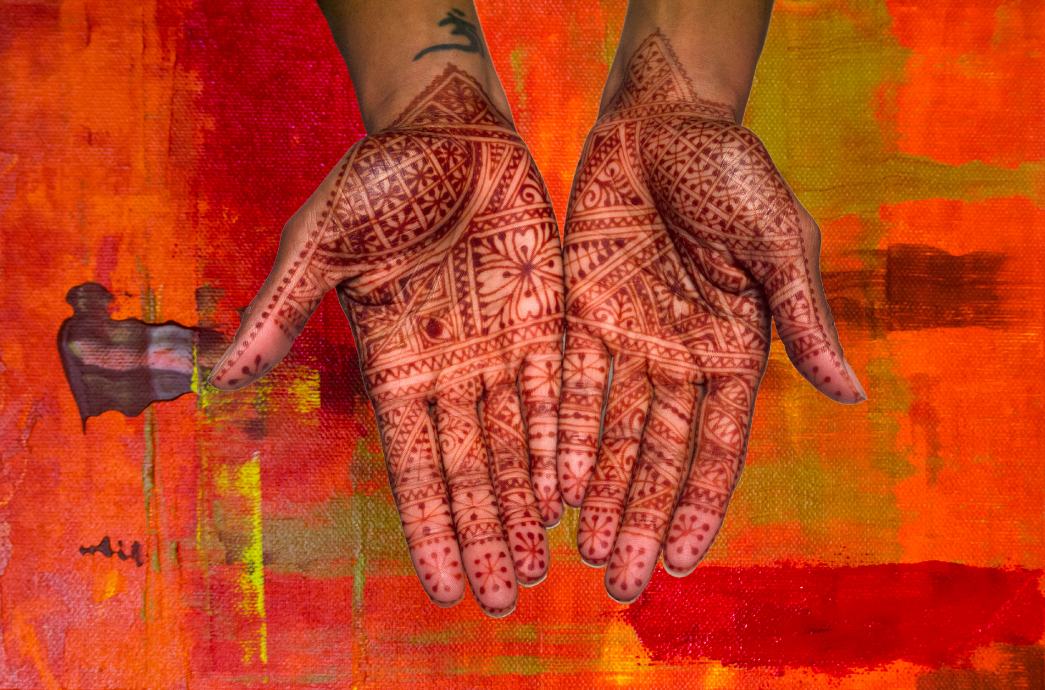
Wander the dusty streets of the Fez medina – or any residential neighborhood, for that matter – long enough, and you will no doubt stumble upon a cacophony of giggles, squeals and lilting song wafting through the air that signals the gathering of Moroccan women of all ages, steeped in the ritual of henna. This beautiful centuries’ old tradition of tattoo is a ceremonial art form that marks the journey into womanhood. The practice of these henna “parties” was used by traditional Amazigh (Berber) tribes to signify a rite of passage, using specific patterns that distinguished themselves from others. These gatherings mark special occasions in a girl’s life - from engagement to wedding; Eid-al-Fitr, the breaking of the Ramadan fast; and from pregnancy to baby celebrations. They hold tremendous treasured spiritual, social, and religious meaning.
Henna’s Symbolism
In Morocco, henna worn on the hands and feet is said to be protective and to bring the wearer baraka, or blessings. There is a careful balance between the blessing and the jnoun, or demons. It is believed that the jnoun have a special weakness for henna so wearing it has the double bonus of both boosting blessings and warding off evil. This distinctly female medium focuses on showcasing design on the parts of the body that connect the wearer to the outside world.

Preparing Henna
Henna comes from the leaves of a heavily perfumed tree, growing in desert climates with extreme heat and dry soil. The henna plant is as integral to Moroccan tradition, as cooking and the collective celebration of a meal. The whole leaves are crushed and ground to a bright green paste, then mixed with a liquid. Each artist has her own recipe, but she often relies on water, lemon, perhaps sugar or molasses, tea, or an essential oil. The paste is prepared well ahead of the ceremony so that it can rest and fully release the pigment from the pulverized leaves.
Once applied to the skin, using sticks, syringes or a piping bag, the henna must remain in place for 4 to 6 hours or even overnight to fully oxidize the stain, turning from orange to dark brown, even burgundy. The longer it is left on, the darker the design and the longer the tattoo will remain. Fading generally occurs after about two or three weeks. In Morocco, henna is usually applied to the palms and the back of the hands, where the color binds best with the more leathery skin. Only married women show henna on the souls of their feet, and patterns extending up the wrists and ankles are often reserved for the bride.

Moroccan Henna Designs
Each design in henna is carefully selected to ward off evil forces and bring blessings. Henna designs in Morocco tend toward more geometric patterns (top photo and black & white below), while Indian tend toward more floral (photo directly above). The most common Moroccan trend today is the Fessi style, so named due to its Fez origins. A serious of dots, swirls, geometric patterns, and tribal symbols each connect to another element, creating a lacy or mesh pattern overall resembling a glove or sleeve.

These designs offer almost total coverage, with little repeat in pattern. It is the least "free hand" of the primary styles of Moroccan henna, and its mathematical roots reflect Arab influence.

Henna and oo'mämē
The hands depicted on the new oo'mämē Moroccan-Inspired Chile Crisp label were created by Kenzi Henna NYC, with traditional, ancient henna symbolism and patterns from Fez. The drawing above was created for oo'mämē from an original custom henna pattern, as shown on the extended palms in the top photograph. Patterned in the style of a Fessi design, the hands are open and offering, a sign of generosity and hospitality. Just as henna protects the soul, oo'mämē feeds it. And in the same way that each henna pattern is meticulously designed, we intentionally choose each spice and ingredient in the oo’mämē Moroccan Chile Crisp. The rich tapestry of classic flavors - dating back to the ancient spice routes - and many textures are woven together, mirroring the design and detail of Moroccan henna artistry. This ancient practice, steeped in tradition, celebrates community and solidarity and a sense of belonging. And that is what we wish for you at every meal.


Comments (0)
Back to Celebrating Culture